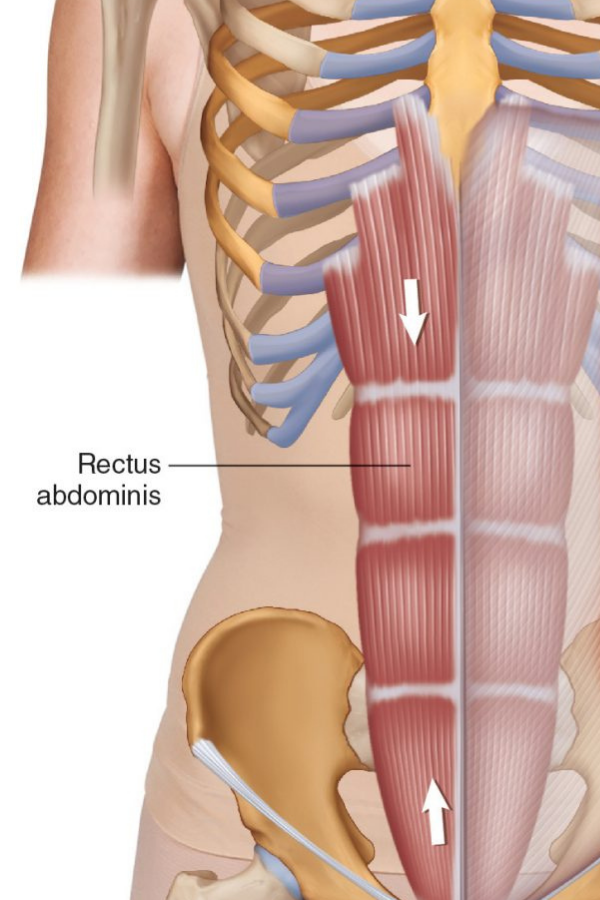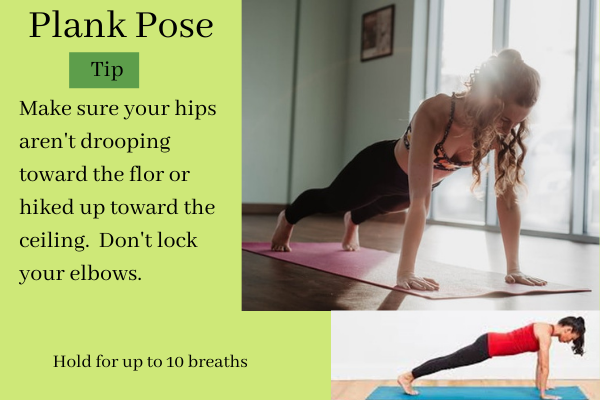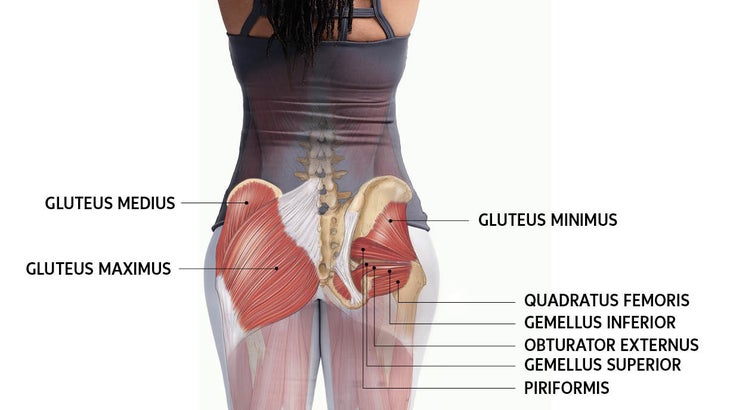Getting Stronger - Part 2 Planks
 You know what you need to feel strong, have stamina, and go the distance? A strong core. Yup. They call it “the core” for a reason, and it’s so important to your whole body! As a matter of fact, the core comprises more of your body than you may realize. It’s not just your abs, but also your back, your glutes, your hips, and all the muscles in your trunk. Having a strong core is what enables you to stand upright, move, sit down, and is involved in almost every total body movement you perform. While there are many ways to ensure a strong core, one of the easiest and most common is the plank.
You know what you need to feel strong, have stamina, and go the distance? A strong core. Yup. They call it “the core” for a reason, and it’s so important to your whole body! As a matter of fact, the core comprises more of your body than you may realize. It’s not just your abs, but also your back, your glutes, your hips, and all the muscles in your trunk. Having a strong core is what enables you to stand upright, move, sit down, and is involved in almost every total body movement you perform. While there are many ways to ensure a strong core, one of the easiest and most common is the plank.
The plank is an isometric exercise (meaning static, no movement) which works your entire body while increasing your metabolism. "Planks focus primarily on your core, but also [work] the stabilizing muscles in your upper body, like your shoulders," says Judine Saint Gerard, a certified personal trainer and fitness coach based in New York City. "But, believe it or not, if you are performing the plank properly, your quads, pelvic floor, and glutes will also be engaged."
"Planks recruit the rectus abdominis — those deep muscles in the abdominals which are responsible for that six-pack," says Heather Fletcher, an exercise physiologist based in Tampa, Florida. Now, I’m not going to lie to you. Doing a couple of planks will not give you instant six-pack abs. But practicing planks regularly will give you a stronger core, which will reduce fatigue, increase endurance, and improve stability.
The improved stability comes from the fact that planks also strengthen the transverse abdominis— the deepest layer of abdominal muscles that are responsible for spinal stability — and the obliques, which help with rotation. While accidents do happen (did I mention I sprained my ankle at that last trail race?), the stronger your core, the more likely you are to be able to stop yourself from falling if you trip on something. And being able to prevent yourself from falling is an incredible superpower you’ll definitely want to develop!
 And because the plank recruits your entire core, it targets your lower back and hips, too. By performing planks regularly (and properly), you will build the core strength to support your spine and help prevent back pain and tight hip flexors. You will also experience better balance because an engaged core helps you stand taller and maintain good posture.
And because the plank recruits your entire core, it targets your lower back and hips, too. By performing planks regularly (and properly), you will build the core strength to support your spine and help prevent back pain and tight hip flexors. You will also experience better balance because an engaged core helps you stand taller and maintain good posture.
Of course, good form is important to get the most out of the exercise and not cause any unnecessary strain. Here are some tips to ensure you are planking properly:
- Fully engage your middle
- Tighten your quads
- Tighten your glutes
- Tuck in your pelvis
- Push your shoulders away from your ears
According to certified personal trainer Rozalynn S. Frazier, this allows you to evenly distribute your weight throughout your body, instead of shifting it all through your shoulders, which can cause strain.
 The tighter you squeeze your lower body, the "easier" the plank becomes. This is because "realistically, the more control you can exert, the longer you can maintain proper positions," according to Andia Winslow, master certified fitness professional, pro athlete, and founder of The Fit Cycle. By engaging your glutes during a plank, you hit the trio of muscles in your rear: the gluteus maximus, gluteus medius, and gluteus minimus.
The tighter you squeeze your lower body, the "easier" the plank becomes. This is because "realistically, the more control you can exert, the longer you can maintain proper positions," according to Andia Winslow, master certified fitness professional, pro athlete, and founder of The Fit Cycle. By engaging your glutes during a plank, you hit the trio of muscles in your rear: the gluteus maximus, gluteus medius, and gluteus minimus.
The stronger your glutes are, the less pressure that will be put on your lower back, and the more stable you will feel during other activities, such as walking, running, hiking, and cycling. Your hips will also generally function better with a more solid backside because weak glutes force you to compensate with your hips. Strong glutes are also the recipe for better overall power, speed, and athletic performance.
Engaging your quads prevents your lower body from sinking. Your quads are also a source of strength, so engaging them in isometric movements like planks enhances your stability, especially in the knees. Weak quads not only wreak havoc on your overall knee function, but a June 2011 study in Osteoarthritis Cartilage shows that it can also contribute to loss of cartilage in the knee joint, which in turn could lead to osteoarthritis.
How to perform a plank:
- Start on all fours with your shoulders stacked directly over your wrists and your hips directly over your knees.
- Keeping your neck in line with your spine, step your feet back, one at a time, forming a straight line from the top of your head to your heels. Keep your feet hip-width apart.
- Tuck your pelvis in to engage your core and squeeze your quads and glutes. Press your heels back slightly to evenly distribute your weight from head to toes. Pull your shoulders back away from your ears and corkscrew your hands into the floor by gripping with your fingers.
Things to keep in mind:
- If you're not able to hold a high plank on your hands, modify the exercise by coming to your forearms.
- The closer your feet are together in a plank, the greater the challenge.
- Avoid pressing your butt into the air or sinking your hips below your shoulders. You want your body to be straight as a (well, you guessed it) plank…
- Start by holding a plank for 10 seconds and slowly work your way to a full minute by adding 10-second increments. Duration should be directly proportionate to form control. Holding a plank for longer than you can maintain proper form is ineffective and may even stress the body to point of injury.
 Carla Frank is an Active Lifestyle & Adventure Mentor, speaker, runner, walker, and hiker. She helps women of all ages and physical abilities develop a powerful partnership with their bodies so they can enjoy a healthier and more active lifestyle. Carla herself is an accidental athlete. She literally failed physical education in school and then spent most of her life behind a desk or on the couch.
Carla Frank is an Active Lifestyle & Adventure Mentor, speaker, runner, walker, and hiker. She helps women of all ages and physical abilities develop a powerful partnership with their bodies so they can enjoy a healthier and more active lifestyle. Carla herself is an accidental athlete. She literally failed physical education in school and then spent most of her life behind a desk or on the couch.
She walked her first marathon in honor of her 40th birthday, and since then, she has participated in over 120 races including 3 consecutive marathons in 3 days around awe-inspiring Lake Tahoe.






